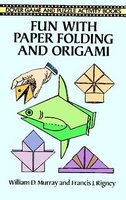 from the diary: “Tuesday 3/18/86
from the diary: “Tuesday 3/18/86“Bot a couple comics at 7-11. Avengers and X-Men. Avengers was fun junk. X-Men was a long downbeat fight scene. Dreary. The X-Men is a comic full of great characters, too bad [writer Chris] Claremont doesn’t know what to do with them. I’m getting tired of X-Men. I’m close again to dumping it. Also close (closer) to dumping New Mutants. Especially since NM’s latest issue provides a great stepping-out place. Also very close to dropping Nexus and Masked Man. The comics I enjoy reading are dwindling to a depressing few. … I still reguarly buy 23 comic books and magazines (the mags being Isaac Asimov’s Science Fiction Magazine and Twilight Zone). … Avengers is still a ‘BUY’ because I’m loyal to it; it’s the first comic I ever collected. I enjoy watching the silly boobs put through their paces, it’s an adventure without too much pseudo-intelletualizing.”
In the diary I make reference to a “categorizing” list. I can sort of picture this. It was, let’s see, yes, it was a list with different categories, like “BUY FOR FUCKIN’ EVER”, “BUY ONLY BECAUSE IF YOU DON’T YOU WON’T KNOW HOW THE STORY TURNS OUT”, “BUY BECAUSE YOU’RE LIKE THIS ROCK ROLLING DOWNHILL AND THIS COMIC BOOK IS GRAVITY GRAVITY GRAVITY”, and “TALK ME OUT OF THIS, PLEASE!” I then sorted all the comics I was buying into these categories. I guess it did help me choose which ones to hold back on, the default position seeming to be BUY, provided I’d already been buying.
When I cleaned out my mother’s house I threw away all the stacked up Isaac Asimov’s Science Fiction Magazine and Twilight Zone. I hadn’t read many of their stories. Mostly I read feature articles and Asimov’s monthly editorial. When I had to contemplate jeeping them back to Berkeley and piling them all in a corner, there to hulk like some guilt monster waiting for me to get around to reading them, I knew the best solution was just to let them go.
I brought home all the comics though. And I do plan to reread them. But then what? I don’t want to hang onto them all forever. There’s no market for back issues anymore.
These days I only buy the occasional comic. King Cat Comics, American Splendor … I check out graphic novels from the library. Recently I read the first volume of Young Avengers. That was quite good.
(By the way, I don't think the X-Men issue pictured is the one I "bot" at 7-11, but it's within an issue or two.)











